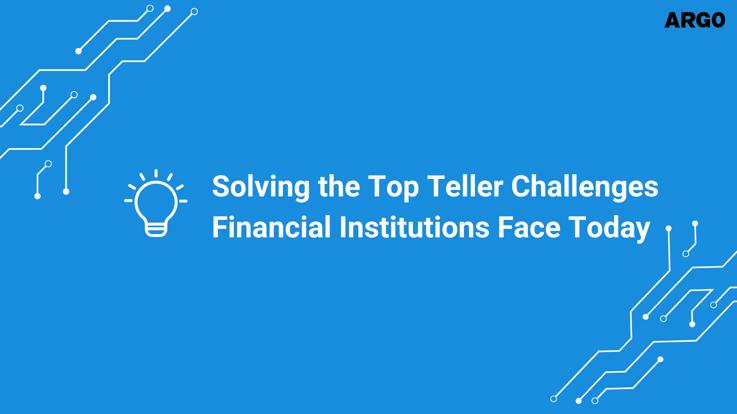Solving the Top Teller Challenges Financial Institutions Face Today

From top 10 to regional, major retail banks tell us that they share five primary challenges regarding their teller strategy, including:
- Process efficiency—simplifying workflow, minimizing document handling, and reducing cost.
- Fraud—detecting fraudulent activity faster and minimizing fraud losses.
- Compliance—minimizing compliance risk, automating cash aggregation, simplifying processes, and filing CTRs (Currency Transaction Reports).
- Customer insight—deepening relationships by fully engaging customers’ sales, service, and advice needs.
- Operational reliability—maximizing system uptime and preventing outages before they happen.
Many branches have seen a decline in traffic and a change in customer transaction requests. As a result, financial institutions are redefining the role of the branch and contact center as well as implementing ways to improve efficiency between the front and back offices.
This starts with implementing a teller payments fraud solution that can provide end-to-end processing for retail and commercial transactions. With features like embedded image capture and unique workflow, tellers can capture 100 percent of transactions at the teller line. Electronic journals log all actions performed on an item once captured, which provides a complete, detailed audit trail that tracks the chain of custody of a physical item from the point of presentment through posting.
With an automated workflow, there can be bidirectional communication between the front office and back office. These automated features give tellers the ability to perfect 95-98 percent of transactions presented in the branch. By perfecting most transactions during presentment, only two to five percent of items are routed to the back office, allowing financial institutions to reduce the time needed to release all branch work to posting by several hours. Because most transactions are perfected on a transaction-by-transaction basis while the customer is present, institutions can reduce adjustment rates by 89-90 percent and decrease write-offs by up to 85 percent.
Back-office personnel can leverage bidirectional communication to review, balance, and perfect transactions effectively. In addition, operators can use bidirectional communication for image and tape rescan requests and electronic journal inquiries. The solution’s workflow monitoring will continually track and manage the transaction flow, further reducing errors and manual reviews needed.
Implementing an embedded, high-performance monetary processing and real-time fraud detection solution will ultimately maximize savings and efficiency, improve the customer experience, and make for a more successful financial institution.
For more information, download the Teller Strategy in Today's World interview document.

